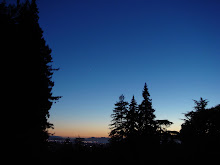 The answer is a waiting line. A long one.
The answer is a waiting line. A long one.Every time a foreign retail chain opens its first shop in Japan, it almost always becomes a social phenomenon. Mass media sensationally promote newly-arrived stores, using words such as "日本上陸 Nihon Joriku/Landing in Japan" or
"日本進出 Nihon Shinshutsu/Entering into Japan."
H&M, a Sweden-based clothing chain has launched its first shop in Ginza, Tokyo, on September 13. 5,000 people had been in line even before the shop opened, and many spent four hours just to get into the shop on the first day. Their second flagship store in Harajyuku has opened on November 8, targeting at younger customers. There are still waiting lines at these shops as long as 1-hour.
The following numbers indicate how popular foreign stores are in Japan
(check out the links for the pictures of long lines):
# of people in line before store opened
H&M Ginza-----------5,000
H&M Harajyuku-------2,000
Burger King------------700
# of customers on the 1st day
H&M Ginza----------------8,300
Krispy Kreme Doughnuts---2,700
IKEA---------------------35,313
Many Japanese are buying into something new AND imported from foreign countries. By "foreign countries," they mean North America and Europe when it comes to new retail stores and many other industries.
People wait in lines with patience, believing the product is worth spending time for. Or, maybe they simply like showing off and talking about what they have seen and bought at newly-opened stores. It's not just shopping but more like sightseeing, experiencing something that no one has seen yet OR everyone around you has seen yet.
The aspiration for the Western lifestyle among the Japanese can have its origin in the Meiji Restoration in the late nineteenth century. That was the national policy to emulate or borrow from West to "modernize" the country. Japan opened its door to the world after 350 years of national isolation, and started adopting technologies, systems and life styles from the "superior" world. This tendency still remains among many Japanese today.
Representing the curious Japanese, I love something new and Euro-American. However, I'm not patient enough to wait in long lines. When Krispy Kreme Doughnuts opened in 2006, it took 2 hours to get a doughnut. I decided not to rush. Two years later,when I stopped by a Krispy Kreme at around 6:00 p.m. on a weekend, the line was 40 minutes long. I gave up as soon as I saw the flock of people. Being desperate for an American doughnut, I tried again on an early Sunday morning at 9:30. Thankfully, I waited for only 10 minutes. The doughnut tasted so American, in other words, very sweet.
I've already been to H&M in San Francisco last year. I didn't buy anything, being unable to find something interesting (to me). I'm not buying into the huge promotion going on in Japan at this moment. However, I heard the product lineup varies from shop to shop, reflecting the demography of the area. To observe the differences and conduct hands-on research, I may go to H&M Ginza and Harajuku someday, maybe some time next year or so when the craze calms down.





















